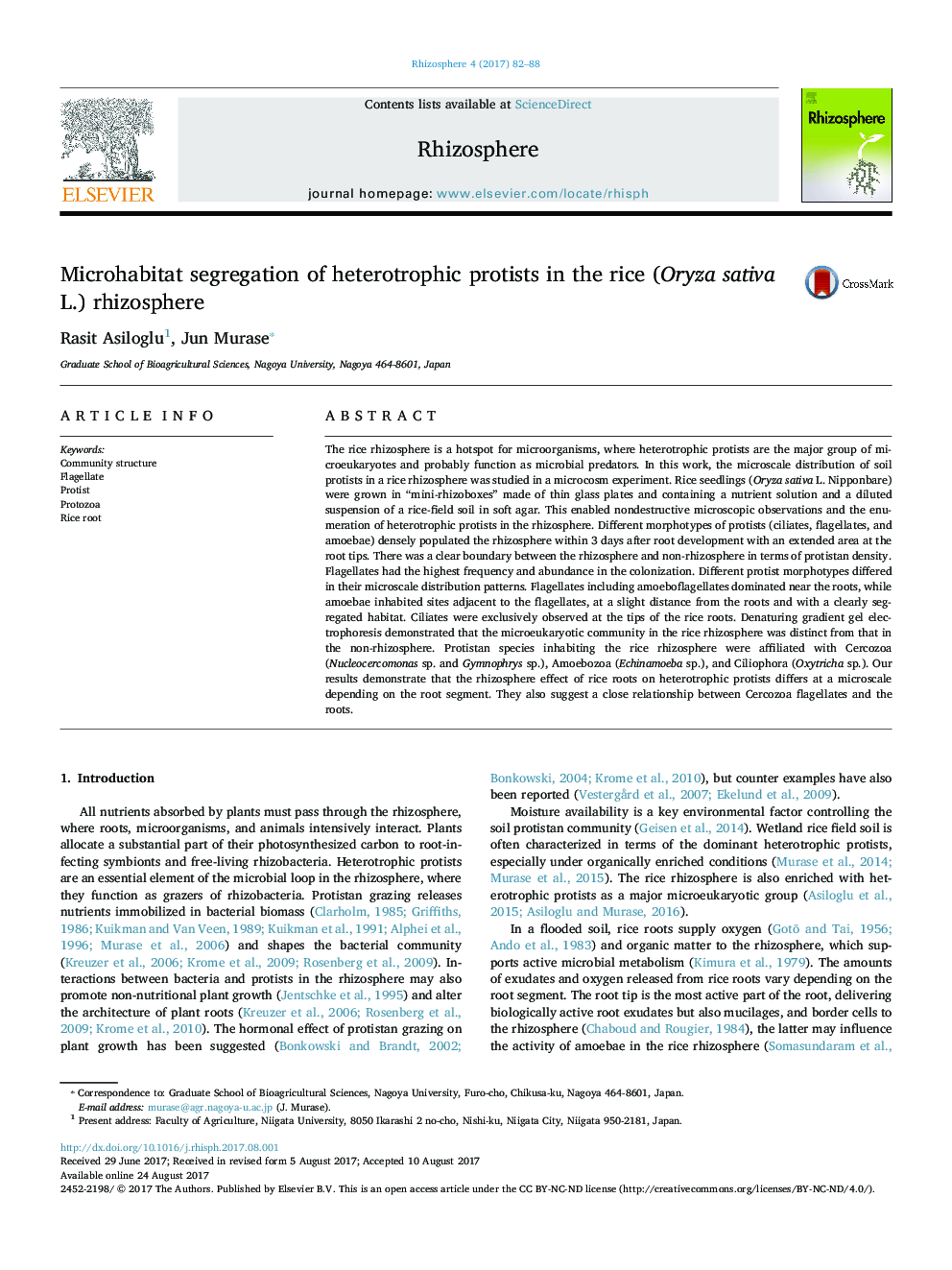| کد مقاله | کد نشریه | سال انتشار | مقاله انگلیسی | نسخه تمام متن |
|---|---|---|---|---|
| 5762805 | 1625040 | 2017 | 7 صفحه PDF | دانلود رایگان |
عنوان انگلیسی مقاله ISI
Microhabitat segregation of heterotrophic protists in the rice (Oryza sativa L.) rhizosphere
دانلود مقاله + سفارش ترجمه
دانلود مقاله ISI انگلیسی
رایگان برای ایرانیان
کلمات کلیدی
موضوعات مرتبط
علوم زیستی و بیوفناوری
علوم کشاورزی و بیولوژیک
علوم زراعت و اصلاح نباتات
پیش نمایش صفحه اول مقاله

چکیده انگلیسی
The rice rhizosphere is a hotspot for microorganisms, where heterotrophic protists are the major group of microeukaryotes and probably function as microbial predators. In this work, the microscale distribution of soil protists in a rice rhizosphere was studied in a microcosm experiment. Rice seedlings (Oryza sativa L. Nipponbare) were grown in “mini-rhizoboxes” made of thin glass plates and containing a nutrient solution and a diluted suspension of a rice-field soil in soft agar. This enabled nondestructive microscopic observations and the enumeration of heterotrophic protists in the rhizosphere. Different morphotypes of protists (ciliates, flagellates, and amoebae) densely populated the rhizosphere within 3 days after root development with an extended area at the root tips. There was a clear boundary between the rhizosphere and non-rhizosphere in terms of protistan density. Flagellates had the highest frequency and abundance in the colonization. Different protist morphotypes differed in their microscale distribution patterns. Flagellates including amoeboflagellates dominated near the roots, while amoebae inhabited sites adjacent to the flagellates, at a slight distance from the roots and with a clearly segregated habitat. Ciliates were exclusively observed at the tips of the rice roots. Denaturing gradient gel electrophoresis demonstrated that the microeukaryotic community in the rice rhizosphere was distinct from that in the non-rhizosphere. Protistan species inhabiting the rice rhizosphere were affiliated with Cercozoa (Nucleocercomonas sp. and Gymnophrys sp.), Amoebozoa (Echinamoeba sp.), and Ciliophora (Oxytricha sp.). Our results demonstrate that the rhizosphere effect of rice roots on heterotrophic protists differs at a microscale depending on the root segment. They also suggest a close relationship between Cercozoa flagellates and the roots.
ناشر
Database: Elsevier - ScienceDirect (ساینس دایرکت)
Journal: Rhizosphere - Volume 4, December 2017, Pages 82-88
Journal: Rhizosphere - Volume 4, December 2017, Pages 82-88
نویسندگان
Rasit Asiloglu, Jun Murase,